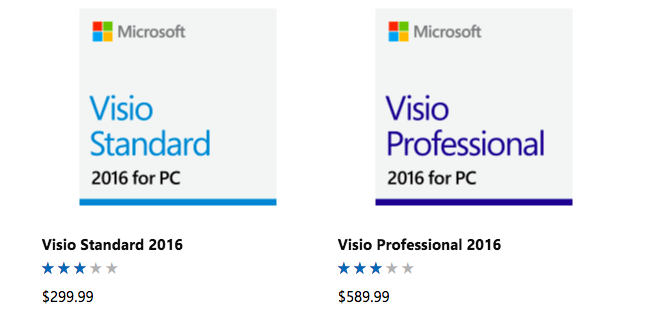If you’re looking for the right flowchart software for your business, be it for engineering, process mapping, or anything in-between, you have 2 major choices: LucidCharts vs Visio.
With this comparison guide, we’ll help you decide between Lucidcharts vs Visio, allowing you to pick the perfect flowchart tool for your business.
LucidCharts vs Visio: Common Features & Stats
Both LucidCharts vs Visio are flowchart tools that give you the freedom to choose from tons of different shapes and styles, for all sorts of flowchart uses.
Both tools excel in their speed and responsiveness and allow collaboration with your team. LucidChart and Visio also have commenting features that allow you to discuss work with @mention notifications. However, LucidChart’s collaboration features stand out in that multiple users can work on the chart at the same time.
In addition, both offer online and knowledge base support.
Lastly, you can get a free trial with both tools, so I would suggest trying them out for free before making your final decision.
LucidCharts

LucidChart’s Pros
- Clean and simple
- Chat
- iPhone app exists
- 15 integrations (Slack, Google Drive, etc.)
- Secure
- Import/Export to different file types
- Social media sharing
- Access to files from any computer
- Revision history/Version control
- Great customer service
LucidChart’s Cons
- Requires internet
- Lack of customization options
- Gets harder and slower to use as charts get more complex

LucidChart Feature Review
LucidChart’s clean and simple user interface makes software onboarding easy for you and your team. You will find it easy and fast to adapt to.
While collaborating with your team on one chart, LucidChart gives you the option to have a real-time chat with your collaborators rather than having to resort to emails. You can even video chat with your team through a Google Hangout option. In addition to great real-time collaboration and chat features, you can also share folders and documents with your teammates through LucidChart so that you don’t have to attach files to emails any longer.
You can even conveniently access your charts through their iPhone application.
LucidChart’s 15 integrations give you the flexibility to personalize the tool to your company. The integrations include:
- Microsoft
- Box
- Slack
- Atlassian
- Dropbox
- Jive
- AWS
Even though LucidChart is a cloud-based app, it buckles down on security and dependability.
Furthermore, you can import from and export to Visio, Gliffy, and OmniGraffle, making file sharing easy.
Because it is a web-based tool, you can access your account and files from any computer. However, this does mean you will not be able to access your charts without internet.
LucidChart also has an excellent revision history which allows you to roll back edits or start a new document version.
Lastly, they are known for their terrific customer service, including extensive video tutorials to help you with the onboarding process.
LucidChart’s Pricing

Who is LucidChart for?
LucidChart is a great option for just about anyone. Whether you are a freelancer, small/medium sized business, or enterprise, LucidChart’s never-ending list of features is bound to apply to you in some aspect.
It’s cheaper price also makes it a manageable option for those who are only dabbling in process mapping.
Visio

Visio’s Pros
- Doesn’t require internet
- Brainstorming function
- Complete set of tools
Visio’s Cons
- Pricey
- Imperfect integration with Office
- Harder to use
- Poor customer service
- Crashes often

Visio Feature Review
Visio conveniently does not require internet, which means you can work on your charts wherever, whenever- even airplanes.
The tool also has specific brainstorming diagram options which help you organize your ideas from meetings. It can do things like recognize and order themes and hierarchies.
Some more complex tools that Visio offers include overlaying your data on top of your complex processes in order to gain insights. As your data updates, so will your charts.
Visio also has the option to share your diagrams with others in your organization to keep your team in sync.
The only integration Visio offers is with Office 365, but even then it is said to be glitchy.
Visio’s Pricing

Who is Visio for?
Visio is a bit more limited when it comes to the customer base. I would recommend Visio to larger businesses who have the funds to invest in this standard process mapping tool. Its lack of intuitiveness means you must be willing to put some time and effort into onboarding Visio. Much of the business world swears by it, however.
LucidCharts vs Visio: The Final Verdict
In the case of LucidCharts vs Visio, there seems to be a clear winner: LucidCharts.
Most importantly, LucidCharts is cleaner and simpler to use while still offering many more features than Visio. The best part is that you can get LucidCharts for free, or at least much cheaper than Visio.
The abundance of integrations that LucidCharts offers makes your processes even more efficient, and the real-time collaboration features diminish the need for messy email conversations.
If you are already using Visio and are looking to switch, LucidCharts makes the transition easy by allowing you to import files from Visio and even export files to any format.
As always, keep in mind that LucidCharts may not always be the clear winner for you. If you have employees who are already familiar with the tool and you are willing to invest more money into a complete set of tools, Visio may be the better option for you. Good luck!
LucidCharts and Visio are trademarks of their respective owners.

